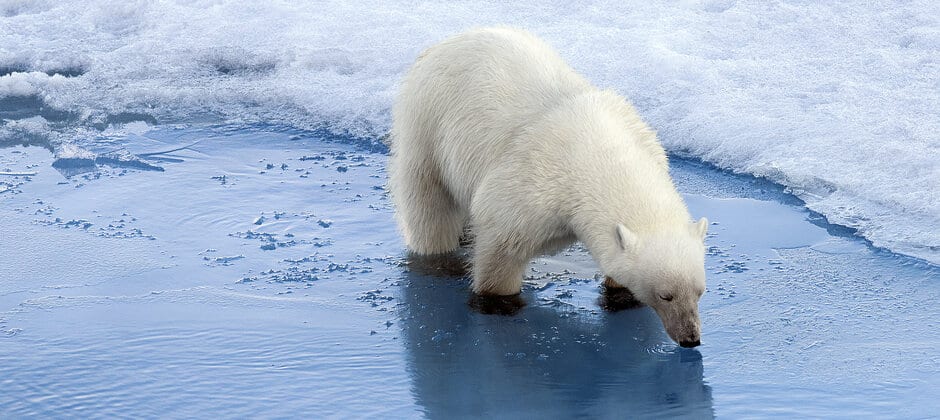Share this article
Climate change presents problems for bears, narwhals
Climate change is causing energy use problems for Arctic mammals. Melting or shifting ice patterns means both narwhals (Monodon Monoceros) and polar bears (Ursus maritimus) need to travel more to find food. Polar bears normally feed on ringed seals (Pusa hispida), but with less sea ice, polar bears can’t hunt seals as well as they have previously. Researchers’ calculations in a new study estimate that to replace the blubber from one ringed seal, bears would need to eat one and a half caribou (Rangifer tarandus), 37 Arctic char (Salvelinus alpinus), 74 snow geese (Chen caerulescens), 216 snow goose eggs or 3 million crowberries. But these types of resources aren’t always readily available to bears. Narwhals, on the other hand, are losing reliable breathing holes due to less predictable ice patterns, which has, in some cases, led to them being trapped under the ice. In open water, which is also becoming more common in some areas, they also face higher predation risk from killer whales (Orcinus orca).
Header Image: A polar bear near the North Pole. Credit: Christopher Michel








